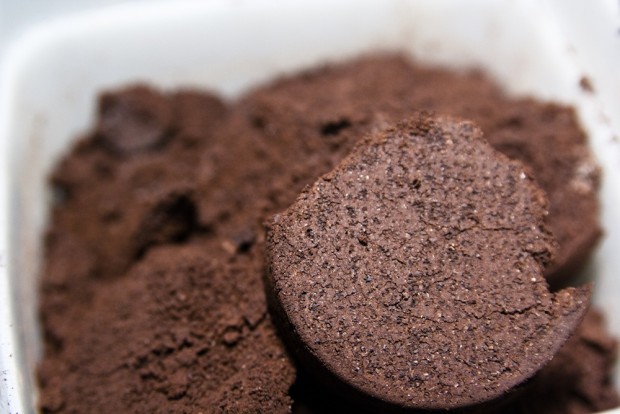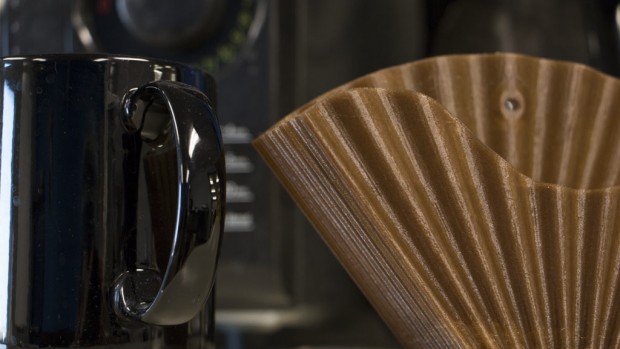The variety of efforts to minimize coffee’s environmental impact is inspiring in its breadth, albeit daunting in its necessity. And in the face of the staggering amount of waste left in the wake of the industry, it can be easy to dismiss the development of individual waste-stream diversion products as either insignificant to the cause of mitigating coffee’s practically unfathomable footprint, or disingenuous opportunism, or both. But to do so plainly out of hand is also to fail to see the forest for the trees.
Individually, these projects and products may not seem significant, but writ large, and over time, they will certainly add up, especially as private industry sees continued opportunity in the “upcycling” economy, where one company’s waste is another’s raw material. In 2015 we saw plenty of progress in the field of repurposing the industry’s most voluminous byproducts into new, usable goods and resources, mostly focused on the endless stream of spent coffee grounds generated in consuming countries. Some inspiring projects also pushed forward in engineering silver linings out of waste created through coffee processing at origin.
The most visible spent-ground-recycler in 2015 remained the UK’s Bio-Bean company, which we initially took note of in 2014 upon the company’s €500,000 windfall from the Postcode Green Lottery Challenge contest held by the Dutch Lottery. The company uses a proprietary method of separating the oils from the solids, refining the former into biodiesel fuel and the latter into highly efficient biomass fuel pellets. This year, Bio-Bean scaled up its 20,000-square-foot North London factory to a level of processing roughly 50,000 tons of coffee waste per year and announced their intention to build a second facility soon.
Here in the States this year, we learned more about the start-up Coffee Coals company that’s slowly building a business of transforming spent industrial coffee grounds into charcoal for use in backyard barbeque grills. The company aims to establish multiple production facilities on or near the campuses of industrial coffee-product manufacturing facilities, minimizing the carting expenses and maximizing their access to the otherwise landfill-bound base material.
In the meantime we discovered other uses for spent coffee, such as paper made of coffee pulp that could potentially be used for to-go cup sleeves, and a 3D printer filament made of coffee-based plastic that is being used to make mugs and other handy, durable objects. Scientists in South Korea this year discovered the potential for spent coffee to trap and store methane gas, which could eventually, in theory, contribute to the fight against the greenhouse effect or help power a fuel cell.
Yet long before roasted coffee gets anywhere near the brewer, there’s also the abundance of waste with which to contend at origin. Progress on that front came in a variety of forms as well, including the proliferation of cascara as a popular drink made from the dried, discarded fruit of the coffee cherry that is separated from the seed.
Coffee Flour, another coffee-fruit wastestream product, officially rolled out this year and was quickly adopted by a handful of cafes and bakeries that began to incorporate the nutrient-dense ingredient into baked goods for sale to the public. There’s also the story of young entrepreneur David Boyle, who is using otherwise discarded coffee cherry to create a cascara-based snack bar, buying the material in wholesale and returning gains to farmers through a nonprofit partnership. (Boyle’s company launched as Cherry Hero, but has since rebranded as Yebo.)
Perhaps the most inspiring news of a waste reincorporation effort came this year from Rwanda, where Peter Kettler’s Black Earth Project champions the use of biochar in soil amendment, water filtration, cooking fuel and more. Biochar is a type of charcoal made from the pyrolysis of any available vegetation scraps, such as cleared brush, pruned branches or old uprooted plants. Early results from the initial experiments on a small number of cooperating farms found an average increase of 33 percent in annual yield from coffee trees on biochar-amended soil.
Here’s to hoping that in 2016 the spent-ground collectors keep doing what they can, while every option imaginable is tested and employed in improving the safety, efficiency and profitability of work on the ground at origin.
Howard Bryman
Howard Bryman is the associate editor of Daily Coffee News by Roast Magazine. He is based in Portland, Oregon.
Comment
3 Comments
Comments are closed.









I am also working in the sphere of waste collecting, recycling and reusing (http://rubbishclearancebattersea.com/). That is why I am really interested in new innovative methods in solving big environmental issues. I am truly amazed by the wonderful properties of coffee waste. Making charcoal, fuel, paper and many other uses of coffee waste may be the key to solving many leading problems. Thanks for the article!
Dear Sir/Madam
May i have a question please?
Is waste coffee grounds useful for animal feed(cow,Sheep and else)?
How can i use it for this important?
Dear Sir/Madam
May i have a question please?
Is waste coffee grounds useful for animal feed(cow,Sheep and else)?
How can i use it for this important?